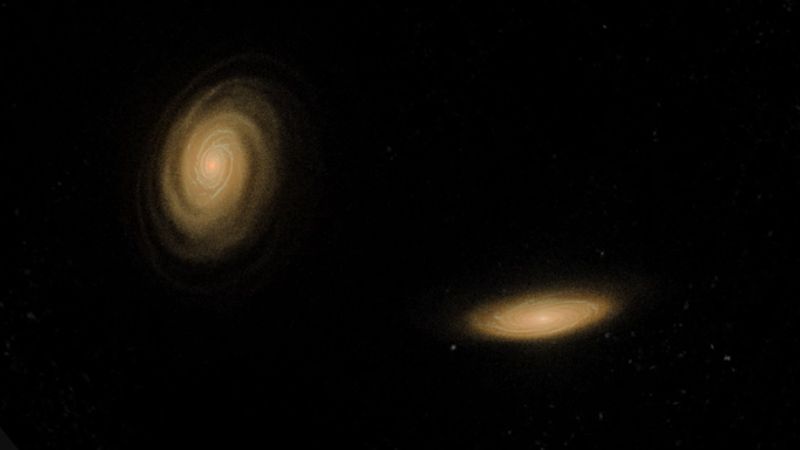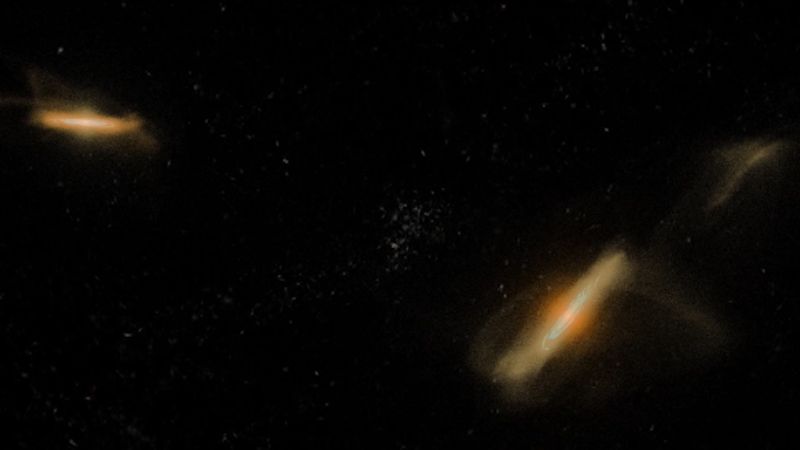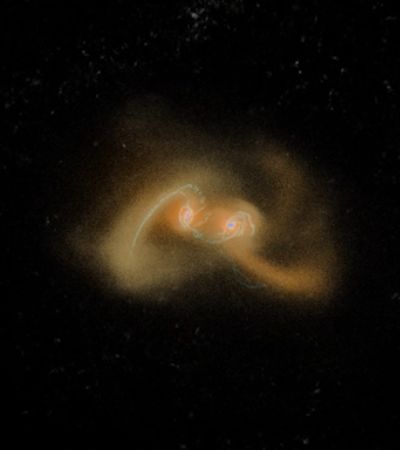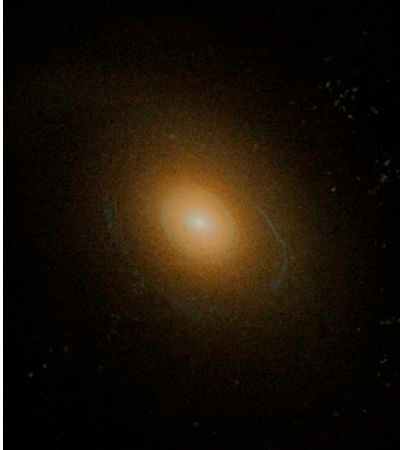XENAKIS, CROSSED VIEWS ON THE ANDROMEDA GALAXY
On the occasion of the centenary of the birth of Iannis Xenakis, composer, engineer and architect, the planetarium of the Cité des sciences et de l'industrie, associated with the programming of the Cité de la musique - Philharmonie de Paris, produced the show “Xenakis, crossed views on the Andromeda galaxy”.
Yohan Dubois, astrophysicist at the IAP, produced for this show a numerical simulation of the collision of the Milky Way with our neighboring galaxy, Andromeda, from their current respective positions in the sky. The two galactic discs begin to interact after 4 billion years and complete their fusion at the end of 8 billion years (Fig. 1 to 3). This numerical simulation, carried out with the computer code RAMSES, models gravitation, gas hydrodynamics, the formation of stars from the gas content available in the interstellar medium of the two galaxies, as well as the explosions of supernovae produced at the end of the evolution of massive stars. The Milky Way and Andromeda are “spiral” galaxies, composed of a central “bulge” (Fig. 2), and a disk in which density waves concentrate the stars in “spiral arms” (Fig. 1). During the interaction between the two galaxies, the orbits of the stars distributed within both galactic disks are strongly disturbed and gravitational tidal tails appear: numerous stars are dispersed outside the disks (Fig. 2). The final merger replaces the two galactic disks, the Milky Way and Andromeda, with a new galaxy baptized Milkomeda, a gigantic elliptical galaxy (Fig. 3).
This very high resolution simulation (more than 8000 pixels per side, in spherical format) is visible from March 9th to April 10, 2022, on the large dome of the planetarium of the Cité des sciences, and provides a striking experience. The video can be viewed below on this page.
 Figure 1: Approach phase of Andromeda (left) and the Milky Way (right) after 3 billion years. The image series shows the old stars of the two galactic discs as a yellow to red gradient (according to the number density and the age of these stars), and in blue the emissions of young stars and gas (credit: Yohan Dubois).
Figure 1: Approach phase of Andromeda (left) and the Milky Way (right) after 3 billion years. The image series shows the old stars of the two galactic discs as a yellow to red gradient (according to the number density and the age of these stars), and in blue the emissions of young stars and gas (credit: Yohan Dubois).
 Figure 2: Distancing phase of Andromeda (right) and the Milky Way (left) after 4.5 billion years. The two galaxies have crossed paths at the end of their previous approach phase (Fig. 1) and are disturbed by gravitational tidal field effects, as shown by swarms of stars scattered away from the two galactic disks. With both disks appearing edge-on in this view, the central bulges of the galaxies are then visible (credit: Yohan Dubois).
Figure 2: Distancing phase of Andromeda (right) and the Milky Way (left) after 4.5 billion years. The two galaxies have crossed paths at the end of their previous approach phase (Fig. 1) and are disturbed by gravitational tidal field effects, as shown by swarms of stars scattered away from the two galactic disks. With both disks appearing edge-on in this view, the central bulges of the galaxies are then visible (credit: Yohan Dubois).

 Figure 3: At the end of a new approach phase, after 5 billion years (left), Andromeda and the Milky Way merge by mixing their stars and gas, which leads them to form, after 7 billion years (right), a new galaxy resembling an elliptical galaxy, Milkomeda (credit: Yohan Dubois).
Figure 3: At the end of a new approach phase, after 5 billion years (left), Andromeda and the Milky Way merge by mixing their stars and gas, which leads them to form, after 7 billion years (right), a new galaxy resembling an elliptical galaxy, Milkomeda (credit: Yohan Dubois).
Video : The entire interaction at the end of which Andromeda and the Milky Way merge into a single galaxy (credit: Yohan Dubois).
Writing and contact
- Yohan Dubois
Institut d’astrophysique de Paris, CNRS, Sorbonne Université
yohan.dubois [at] iap [dot] fr
Iconography: Yohan Dubois, Valérie de Lapparent
Layout: Jean Mouette
April 2022
